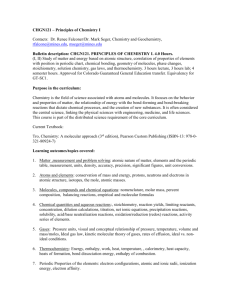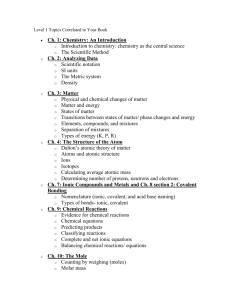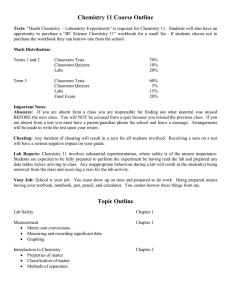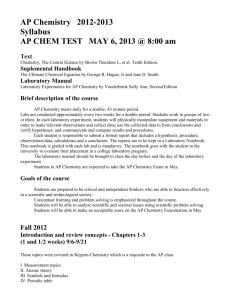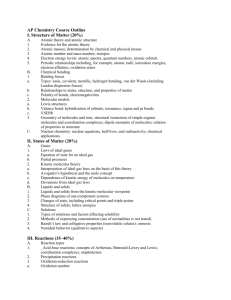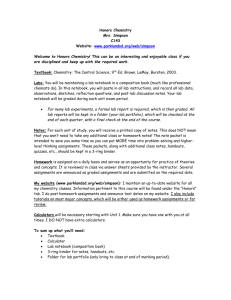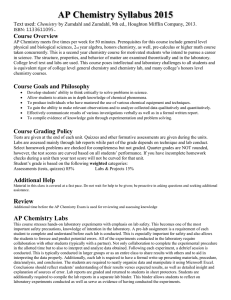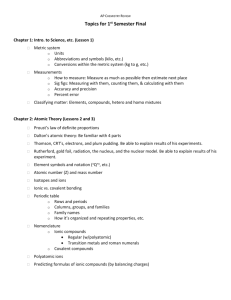ACS General Chemistry Exam Study Guide
advertisement
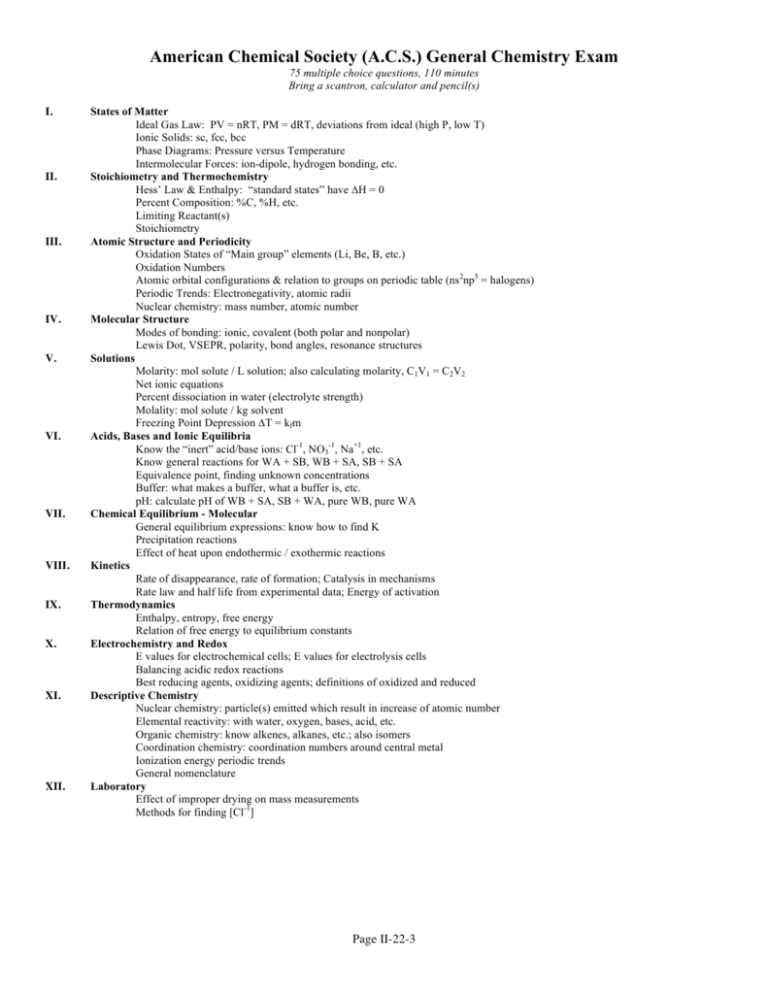
American Chemical Society (A.C.S.) General Chemistry Exam 75 multiple choice questions, 110 minutes Bring a scantron, calculator and pencil(s) I. II. III. IV. V. VI. VII. VIII. IX. X. XI. XII. States of Matter Ideal Gas Law: PV = nRT, PM = dRT, deviations from ideal (high P, low T) Ionic Solids: sc, fcc, bcc Phase Diagrams: Pressure versus Temperature Intermolecular Forces: ion-dipole, hydrogen bonding, etc. Stoichiometry and Thermochemistry Hess’ Law & Enthalpy: “standard states” have ∆H = 0 Percent Composition: %C, %H, etc. Limiting Reactant(s) Stoichiometry Atomic Structure and Periodicity Oxidation States of “Main group” elements (Li, Be, B, etc.) Oxidation Numbers Atomic orbital configurations & relation to groups on periodic table (ns2np5 = halogens) Periodic Trends: Electronegativity, atomic radii Nuclear chemistry: mass number, atomic number Molecular Structure Modes of bonding: ionic, covalent (both polar and nonpolar) Lewis Dot, VSEPR, polarity, bond angles, resonance structures Solutions Molarity: mol solute / L solution; also calculating molarity, C1V1 = C2V2 Net ionic equations Percent dissociation in water (electrolyte strength) Molality: mol solute / kg solvent Freezing Point Depression ∆T = kfm Acids, Bases and Ionic Equilibria Know the “inert” acid/base ions: Cl-1, NO3-1, Na+1, etc. Know general reactions for WA + SB, WB + SA, SB + SA Equivalence point, finding unknown concentrations Buffer: what makes a buffer, what a buffer is, etc. pH: calculate pH of WB + SA, SB + WA, pure WB, pure WA Chemical Equilibrium - Molecular General equilibrium expressions: know how to find K Precipitation reactions Effect of heat upon endothermic / exothermic reactions Kinetics Rate of disappearance, rate of formation; Catalysis in mechanisms Rate law and half life from experimental data; Energy of activation Thermodynamics Enthalpy, entropy, free energy Relation of free energy to equilibrium constants Electrochemistry and Redox E values for electrochemical cells; E values for electrolysis cells Balancing acidic redox reactions Best reducing agents, oxidizing agents; definitions of oxidized and reduced Descriptive Chemistry Nuclear chemistry: particle(s) emitted which result in increase of atomic number Elemental reactivity: with water, oxygen, bases, acid, etc. Organic chemistry: know alkenes, alkanes, etc.; also isomers Coordination chemistry: coordination numbers around central metal Ionization energy periodic trends General nomenclature Laboratory Effect of improper drying on mass measurements Methods for finding [Cl-1] Page II-22-3


